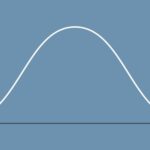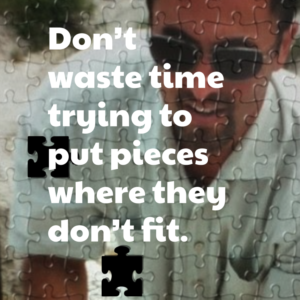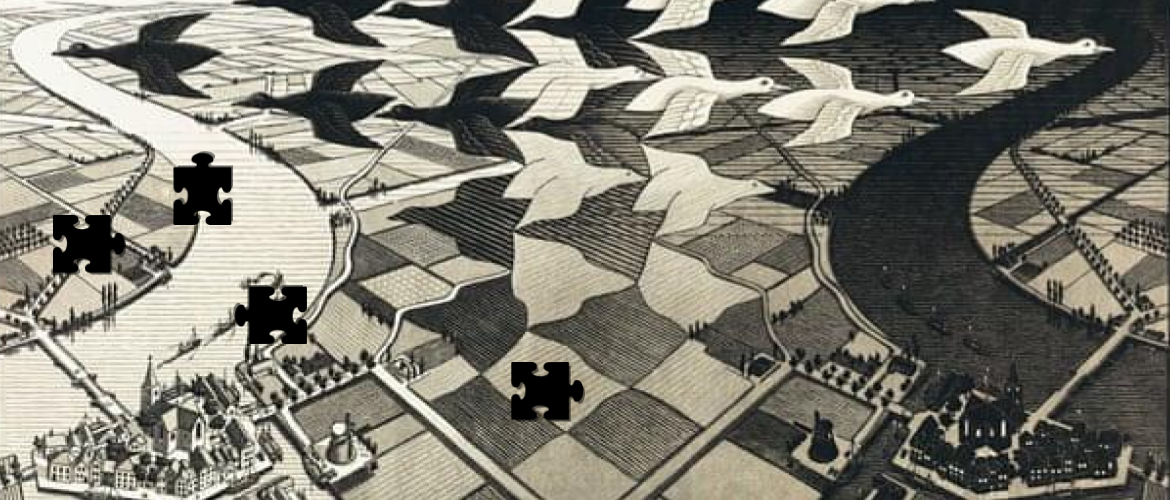What I learned about mindset and bell curves doing jigsaw puzzles during the pandemic.
Our family must have over a hundred games in the living room closet. During this pandemic year, I think we’ve played them all. The one I’d been avoiding may be exactly what I needed to change my way of thinking.
🧩 🧩 🧩 🧩
I open a new jigsaw puzzle with anticipation and excitement. To add another layer of intrigue, my wife and I often opt not to look at the picture on the lid. Without a reference point, the pile of shapes, hues, and fragmented patterns are like an impressionist painting. No single fragment yields a clue to the whole picture.
Sifting the mound like sand through our fingers, we pull out pieces to define a perimeter. Initially, the single flat edges of border pieces stand out like gold nuggets in a prospecting pan.
The more edges we find, the harder it gets. When we’re down to the last one or two, I start wondering if the manufacturer left pieces out or if the cats got at it when our backs were turned. Maybe that last piece just doesn’t want to be found. The experience repeats as we apply our next strategy of separating identifiable colors or patterns.
The pile gradually gets smaller, like a mountain eroding. The odds of finding specific pieces proportionately improve. At some point, we’re not looking for one out of a thousand, but maybe one in a hundred. When nearly completed, the last dozen pieces fall into place with no more effort than a coin sorting machine.
 You can imagine the process I’ve described as a bell curve: easy, harder, then easy again. Maybe the curve (and not recreating a larger image of a field of umbrellas!) is their actual appeal.
You can imagine the process I’ve described as a bell curve: easy, harder, then easy again. Maybe the curve (and not recreating a larger image of a field of umbrellas!) is their actual appeal.
You choose a puzzle that suits you based not just on the picture but on its ability to put you in your “Goldilocks zone.” That’s where the size, complexity of shapes, and repetition of patterns is not so simple or so challenging that you give up. You’re lured in, you struggle, and then you conquer.
Why this discovery now? The pandemic has been a mind opener in countless ways. My wife has always loved jigsaw puzzles, but I had thought, with little experience or introspection to support it, they “weren’t my thing.”
The fact is, everything we do was, at one point, not our thing. Before I learned the activities I love, they were someone else’s thing. Those I admired, inspired. At first it was casual, then a struggle to get better, and after a lot of experience, some degree of expertise, or at least flow. I’ve come to enjoy frustration, the peak of the curve, as notification that I am on the precipice of learning something new.
In my life and my teaching I can see that I’ve approached problems as puzzles. I know that each has a pattern to be deciphered, strategies for tackling it, and at least one solution.
 As a crossword, sudoku, and escape room fan, and a guy who wants to hack and fix everything, I had already developed many problem solving skills.
As a crossword, sudoku, and escape room fan, and a guy who wants to hack and fix everything, I had already developed many problem solving skills.
What I love about the jigsaw puzzle is less any application of skills and more the psychology. It is meditative, the perfect break from work. For the two of us, it is social, a time to chat after dinner. It is both mindless and mindful. I assemble sections almost unconsciously yet I am present and constantly constructing the bigger picture in my mind.
I recommend not only jigsaw puzzles, but thinking about the bell curve in any endeavor. If we consider there will always and eventually be the downward slope, the uphill climb might mean something different.
As we pick up the pieces from this past year, I hope we are all able to put them together in a scene that magnifies all the good we’ve come to sense and appreciate.
⚙ Dr. Marc
This post originated as a thank you to my wife for encouraging me to try jigsaw puzzles. I have decided to share it as a companion piece to my previous (and more academic) blog on problem-based learning.
If you think someone in your professional learning network, neighborhood, or the next cubicle would benefit from engaging in topics like the ones in these posts, please feel free to forward them.
©2021 Marc Natanagara, Ed.D. All rights reserved. Reprinted with permission.
This article and other resources available at authenticlearningllc.com
When duplicating this post in any form, please be sure to include the attribution in italics above.
When duplicating an infographic, be sure to include attributions within the graphic.
Image of “Day and Night” by MC Escher (1938) courtesy of Collection Gemeentemuseum Den Haag/the MC Escher Company (puzzle silhouettes added by the author)
March 2021





